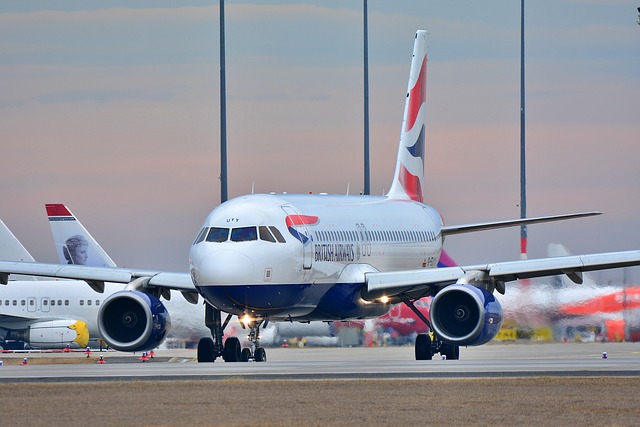How to Travel Safely with FAA-Approved Mini Oxygen Concentrators in United States 2025
FAA-approved portable oxygen concentrators (POCs) let many people who need supplemental oxygen travel by air across the United States. This article explains 2025 guidelines, required documentation, practical preparation steps to fly safely with less stress and offers common tips.

Why FAA Approval Matters for Mini Oxygen Concentrators
The Federal Aviation Administration (FAA) sets strict criteria for portable oxygen concentrators used on commercial flights within the United States. Only POCs that meet these standards—and display an FAA compliance label—are permitted aboard aircraft cabins. This ensures devices operate safely in pressurized cabin environments without interfering with aircraft systems.
Passengers using mini oxygen concentrators must confirm their device is FAA-approved before travel. Common features of such devices include compact size, reliable oxygen delivery, and battery operation suitable for extended flights.
Consulting Your Healthcare Provider Before Traveling
Before booking your flight, it is crucial to discuss your oxygen therapy needs with your healthcare provider. Your physician can:
- Verify the correct oxygen flow settings for various altitudes and activities during travel.
- Provide a detailed medical prescription or physician’s statement confirming your need for supplemental oxygen and specific use of your mini oxygen concentrator.
This documentation is commonly required by airlines for boarding approval and useful for airport security screenings.
Airline Notification and Documentation Requirements
Most U.S. airlines require passengers to notify them 48 to 72 hours in advance when planning to bring and use a portable oxygen concentrator during flight. Notification procedures vary by airline but often include submitting a medical information form or a physician’s statement.
When preparing your travel documents, bring:
- Your physician’s prescription or medical necessity letter.
- The device’s user manual and manufacturer specifications.
- Warranty and maintenance information if available.
Organizing these in an accessible folder can simplify verification by airline staff and security personnel.
Battery Power Management for Flights
A key FAA regulation mandates travelers carry enough battery power to operate their portable oxygen concentrator for at least 150% of the flight duration. For example, on a 4-hour flight, you must have batteries that cumulatively provide 6 hours of usage.
Important considerations include:
- Carrying spare batteries in your carry-on luggage, not in checked baggage.
- Protecting batteries from short circuits by keeping them in original packaging or insulated with tape over exposed terminals.
- Fully charging batteries before boarding.
- Not relying on aircraft electrical outlets to power or recharge your device during the flight, as these may not supply adequate power.
Device Handling and Seating During the Flight
During flight, FAA rules require the mini oxygen concentrator to remain with you at all times. The device should be:
- Placed under the seat in front of you to avoid blocking the aisle.
- Managed carefully to prevent tubing tangles and tripping hazards.
- Positioned so that filters and air intake vents remain unobstructed to prevent overheating.
Additionally, passengers using POCs are prohibited from sitting in exit rows due to safety protocols. Some airlines allocate window or aisle seats for easier device management; confirm your seating assignment when notifying the airline.
Different Types of Portable Oxygen Concentrators and Travel Suitability
Portable oxygen concentrators generally fall into two categories:
- Pulse Dose Concentrators: Deliver oxygen only during inhalation, tend to be lighter, and offer longer battery life (typically 2 to 10 hours depending on settings). Suitable for active travelers.
- Continuous Flow Concentrators: Provide a steady oxygen flow regardless of breathing, often used by patients requiring consistent oxygen levels, including during sleep. Usually heavier with shorter battery life.
Select the type of concentrator that best matches your oxygen requirements and travel plans.
Preparing for Cabin Pressure Effects and Emergency Situations
Aircraft cabins are pressurized to simulate altitudes of about 6,000 to 8,000 feet, which can impact oxygen saturation, especially for respiratory-compromised passengers. Since the device’s oxygen delivery might be less effective at this pressure, it is important to:
- Understand how to use seat oxygen masks offered by the airline in emergencies.
- Inform flight attendants about your condition and oxygen equipment.
- Keep your device’s manual on hand for troubleshooting.
- Have a backup plan for oxygen therapy if needed.
Additional Travel Tips for Mini Oxygen Concentrator Users
Beyond primary requirements, consider these recommendations to enhance your travel experience:
- Pack extra nasal cannulas, tubing, and accessories in your carry-on luggage.
- Use wheeled carrying cases to ease transport through airports.
- Research oxygen suppliers and customs regulations if traveling internationally.
- Carry laminated cards explaining your medical condition and equipment in multiple languages, especially for non-English speaking destinations.
Summary
Traveling with an FAA-approved mini oxygen concentrator in the United States requires thoughtful preparation involving medical consultation, airline communication, and device management. Complying with FAA and airline regulations regarding documentation, battery capacity, seating, and device handling ensures safety and comfort during air travel. With the right planning, oxygen therapy users can confidently enjoy the freedom of flight while maintaining their health.
Disclaimer: The information provided here is intended for educational purposes and does not replace professional medical advice. Pricing, availability, and airline policies may vary by location and change over time. Travelers should verify current regulations directly with their airlines and consult healthcare providers before flying.
Sources
-
Transportation Security Administration (TSA) – Portable Oxygen Concentrators https://www.tsa.gov/travel/security-screening/whatcanibring/items/portable-oxygen-concentrators
-
Guide to Flying with an Oxygen Concentrator – Oxygen Concentrator Store https://www.oxygenconcentratorstore.com/blog/guide-to-flying-with-an-oxygen-concentrator/




